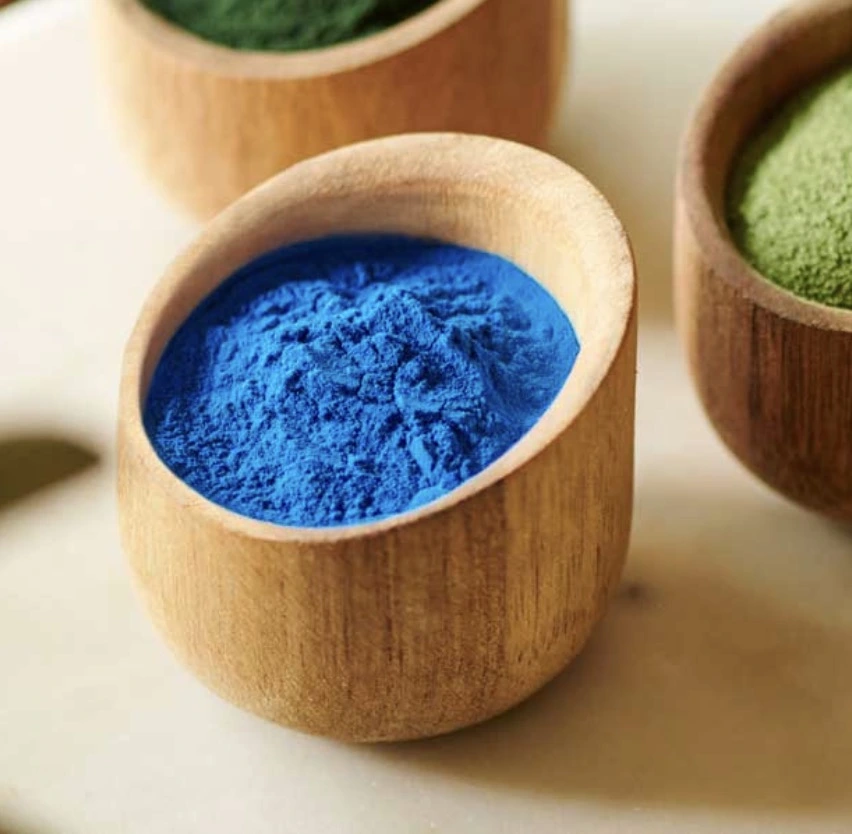Luteolin - Enhance Mental Clarity & Support Healthy Aging
Luteolin, a naturally occurring flavonoid, is gaining acknowledgment for its potential to enhance mental clarity and support solid maturing. Found in different plants, this capable compound shows antioxidant and anti-inflammatory properties that contribute to cognitive well-being and overall well-being. As we age, maintaining cognitive function and securing our bodies from age-related decrease becomes progressively imperative. Luteolin is developing as a promising common arrangement, advertising a range of benefits that can help us accomplish these objectives. Investigate proposes that luteolin may progress memory, decrease brain irritation, and combat oxidative stress, making it an important expansion to a solid lifestyle. Let's dive more deeply into the world of luteolin and reveal its remarkable potential.
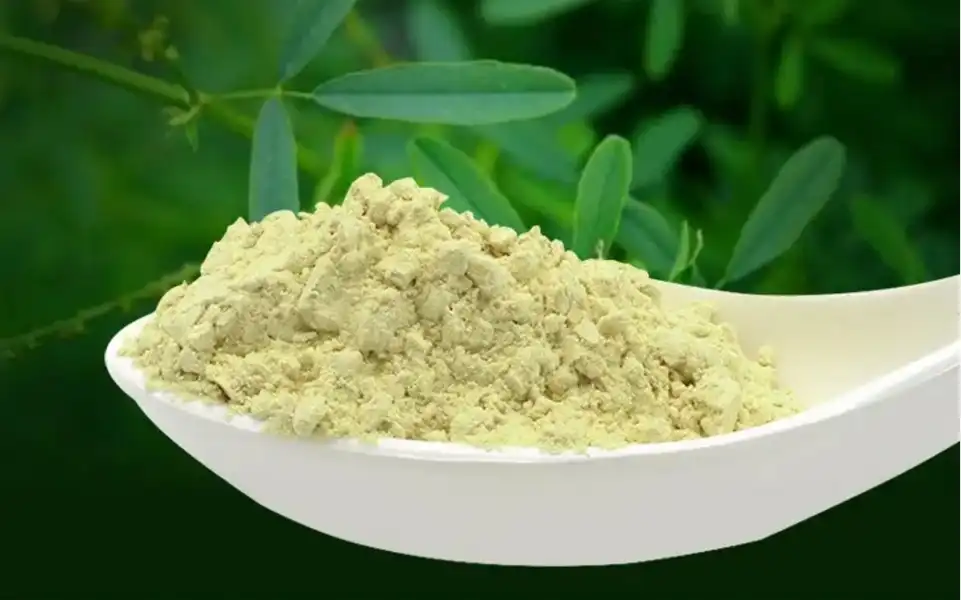
What is Luteolin? A Powerful Plant-Based Compound
Luteolin is a normally occurring flavonoid, a type of plant metabolite famous for its strong antioxidant and anti-inflammatory properties. This surprising compound is found in a variety of fruits, vegetables, and herbs, contributing to their dynamic colors and health-promoting benefits. Luteolin is characterized by its interesting chemical structure, which highlights a flavone spine with hydroxyl bunches connected at specific positions. This structure permits it to be connected with different cellular targets, interceding in its differing biological activities.
Natural Sources of Luteolin
A panoply of plants serves as natural stores of luteolin. Celery, parsley, and broccoli are among the most unmistakable dietary sources. Green peppers, carrots, and thyme also contribute to luteolin admissions. These promptly accessible vegetables can be effortlessly incorporated into an adjusted diet, advertising a common way to obtain this useful flavonoid. Furthermore, certain conventional restorative herbs, such as chamomile and peppermint, are recognized for their lifted luteolin substance, displaying openings for those seeking elective approaches to well-being and wellness. The changed roots of luteolin emphasize its widespread nearness in the plant kingdom.
Bioavailability and Metabolism
The bioavailability of luteolin, which refers to the extent to which it is retained and utilized by the body, is a pivotal viewpoint of its adequacy. Research demonstrates that luteolin is ingested in the small intestine, where it undergoes metabolic changes. It is vital to know that components such as the nourishment network, gut microbiota composition, and person varieties in the digestion system can impact luteolin assimilation. Once retained, luteolin and its metabolites circulate in the bloodstream, reaching different tissues, including the brain, where they can exert their advantageous impacts. Ponders have distinguished a few luteolin metabolites, counting glucuronides and sulfates, which may contribute to its overall biological activity.
Chemical Structure and Properties
Luteolin's chemical structure is key to its potent antioxidant and anti-inflammatory properties. Its flavone spine, decorated with hydroxyl groups, empowers it to rummage free radicals and modulate incendiary signaling pathways. The particular arrangement of these hydroxyl groups permits luteolin to give electrons, neutralizing reactive oxygen species (ROS) and decreasing oxidative stress. In addition, luteolin can interact with different chemicals and receptors included in aggravation, such as cyclooxygenase (COX) and nuclear factor-kappa B (NF-κB), subsequently constricting the incendiary response.
Luteolin’s Role in Promoting Mental Clarity
Luteolin has garnered significant consideration for its potential to upgrade mental clarity and cognitive work. Rising research proposes that this powerful flavonoid can emphatically impact different perspectives of brain well-being, counting memory, center, and overall cognitive performance. The components of luteolin's fundamental cognitive-enhancing effects are multifaceted, including its capacity to tweak neurotransmitter frameworks, reduce neuroinflammation, and protect against oxidative push. These properties make luteolin a promising common compound for supporting cognitive well-being, especially in the setting of maturing and age-related cognitive decline.
Neurotransmitter Modulation
Luteolin's impact on neurotransmitter frameworks plays a significant role in its cognitive-enhancing impacts. Neurotransmitters, such as acetylcholine, dopamine, and serotonin, are fundamental for various cognitive forms, including learning, memory, and consideration. Considers have appeared that luteolin can impact the movement of these neurotransmitters, possibly improving cognitive work. For example, luteolin has been illustrated to restrain the movement of acetylcholinesterase, a chemical that breaks down acetylcholine. By expanding acetylcholine levels in the brain, luteolin may upgrade cholinergic signaling, which is significant for memory and learning.
Protection Against Neurodegeneration
Luteolin's neuroprotective properties extend to its potential to relieve neurodegenerative processes associated with cognitive decrease. Neurodegenerative diseases, such as Alzheimer's and Parkinson's, are characterized by the progressive misfortune of neurons and cognitive work. Luteolin has been shown to protect against neuronal damage and pass through different components, counting lessening oxidative stress, hindering irritation, and advancing neuronal survival. Investigate proposes that luteolin can activate cellular defense components, such as the Nrf2 pathway, which upregulates antioxidant enzymes and ensures against oxidative damage. Moreover, luteolin has been shown to balance the action of proteins involved in neuronal survival and apoptosis, such as Bcl-2 and Bax, advancing neuronal resilience.
Enhancing Synaptic Plasticity
Synaptic plasticity, the capacity of synapses to fortify or weaken over time, is principal to learning and memory. Luteolin has been shown to upgrade synaptic versatility by modulating different signaling pathways included in synaptic work. For occasion, luteolin can increment the expression of brain-derived neurotrophic factor (BDNF), a protein that plays a vital part in synaptic versatility and neuronal survival. BDNF advances the development and separation of unused neurons and fortifies existing synapses, contributing to improved cognitive work.
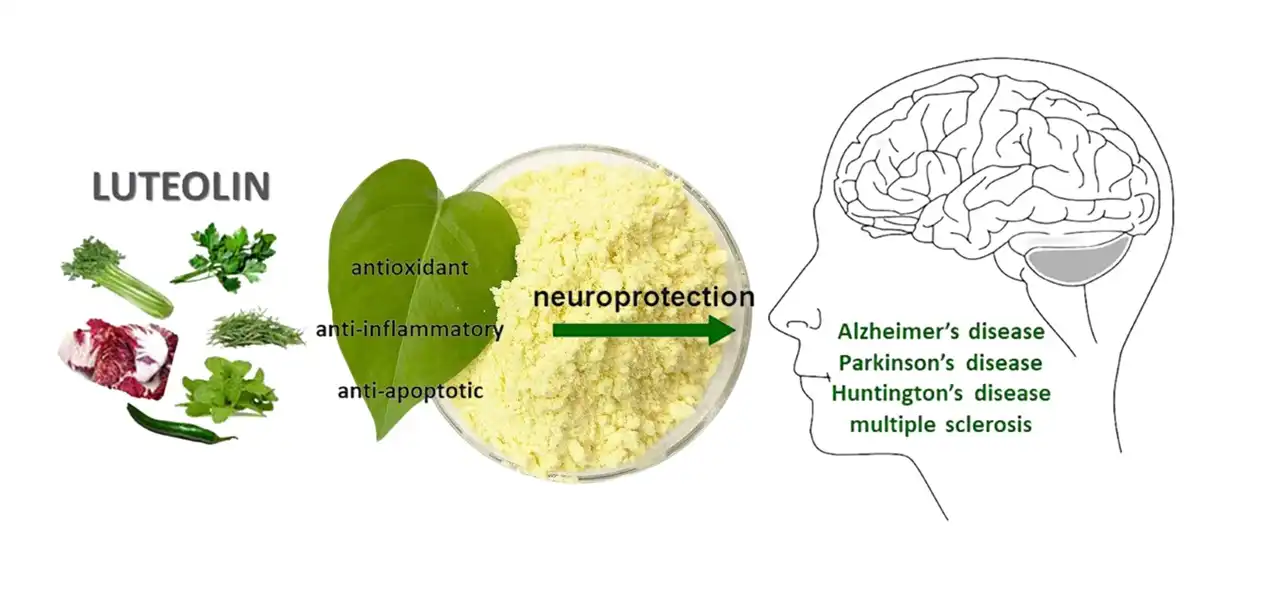
Anti-Inflammatory Properties for Brain Health
Irritation is a natural reaction to injury or contamination, but persistent aggravation in the brain can have inconvenient impacts on cognitive work and overall brain wellbeing. Luteolin shows powerful anti-inflammatory properties that can help moderate neuroinflammation and secure the brain from its harmful results. By balancing different incendiary pathways, luteolin can decrease the generation of pro-inflammatory atoms, such as cytokines and chemokines, which contribute to neuronal damage and cognitive decline.
Inhibition of Inflammatory Mediators
Luteolin's anti-inflammatory prowess stems from its capacity to inhibit the generation and action of different provocative arbiters. Cytokines, such as tumor necrosis factor-alpha (TNF-α) and interleukin-1 beta (IL-1β), are key players in the inflammatory reaction and have been embroiled in neuroinflammation. Luteolin has been shown to suppress the generation of these cytokines by tweaking the movement of transcription components, such as nuclear factor-kappa B (NF-κB), which regulate the expression of incendiary qualities. By decreasing cytokine levels, luteolin can weaken neuroinflammation and protect against neuronal damage.
Modulation of Microglial Activation
Microglia, the resident immune cells of the brain, play a significant part in neuroinflammation. When actuated, microglia discharge pro-inflammatory molecules that can contribute to neuronal damage and cognitive brokenness. Luteolin has been shown to modulate microglial actuation, reducing their incendiary reaction and advancing a more balanced immune state in the brain. Studies have illustrated that luteolin can inhibit the actuation of signaling pathways included in microglial enactment, such as the mitogen-activated protein kinase (MAPK) pathway. By dampening microglial enactment, luteolin can help mitigate neuroinflammation and protect against its negative impacts on brain wellbeing.
Blood-Brain Barrier Protection
The blood-brain barrier (BBB) is a profoundly selective boundary that controls the entry of substances from the circulation system into the brain. Unremitting aggravation can compromise the integrity of the BBB, driving to expanded porousness and the section of harmful substances into the brain. Luteolin has been shown to protect the BBB from inflammation-induced harm, keeping up its integrity and anticipating the convergence of fiery particles into the brain. Studies have illustrated that luteolin can decrease the expression of attachment molecules on endothelial cells, which line the blood vessels of the BBB, subsequently lessening the penetration of immune cells into the brain.
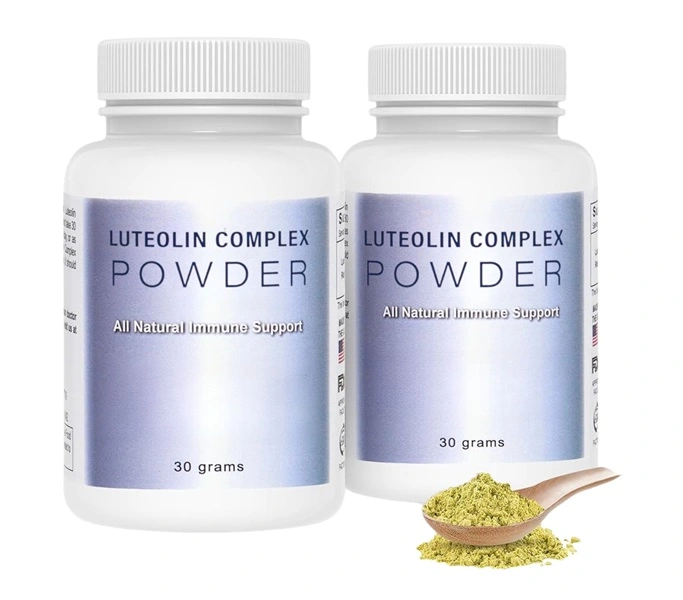
Luteolin and its Potential in Combating Oxidative Stress
Oxidative stress, an imbalance between the generation of reactive oxygen species (ROS) and the body's antioxidant defenses, plays a critical part in maturing and age-related illnesses, including cognitive decay. Luteolin, with its powerful antioxidant properties, has risen as a promising natural compound for combating oxidative stress and ensuring against its harmful impacts. By scavenging free radicals and upgrading the body's antioxidant defenses, luteolin can help keep up cellular homeostasis and advance healthy maturing.
Free Radical Scavenging
Luteolin's antioxidant movement is largely ascribed to its capacity to rummage free radicals, profoundly responsive particles that can damage cellular components, including DNA, proteins, and lipids. The unique chemical structure of luteolin, including numerous hydroxyl bunches, empowers it to give electrons to free radicals, neutralizing their reactivity and preventing them from causing cellular harm. Ponders have illustrated luteolin's adequacy in rummaging different sorts of free radicals, counting superoxide, hydroxyl, and peroxyl radicals. By diminishing free radical levels, luteolin can protect cells from oxidative damage and promote cellular wellbeing.
Enhancement of Antioxidant Enzyme Activity
In addition to its direct free radical rummaging movement, luteolin can also improve the body's endogenous antioxidant resistances. Luteolin has been shown to increment the action of various antioxidant proteins, such as superoxide dismutase (Sod), catalase (CAT), and glutathione peroxidase (GPx). These proteins play a vital part in neutralizing ROS and maintaining redox balance inside cells. By upregulating the action of these proteins, luteolin can improve the body's capacity to combat oxidative stress and protect against age-related decline. The tweak of antioxidant chemical movement by luteolin is intervened through the actuation of translation variables, such as atomic figure erythroid 2-related factor 2 (Nrf2), which direct the expression of antioxidant genes.
Protection Against Lipid Peroxidation
Lipid peroxidation, the oxidative degradation of lipids, is a major contributor to cellular damage and maturing. Luteolin has illustrated significant defensive impacts against lipid peroxidation, preserving the judgment of cell layers and avoiding the arrangement of harmful lipid peroxidation items. Considers have appeared that luteolin can inhibit the start and engendering of lipid peroxidation by rummaging lipid peroxyl radicals and chelating metal particles that catalyze the prepare. Moreover, luteolin can improve the action of proteins included in the repair of oxidatively damaged lipids, such as phospholipid hydroperoxide glutathione peroxidase (PHGPx).
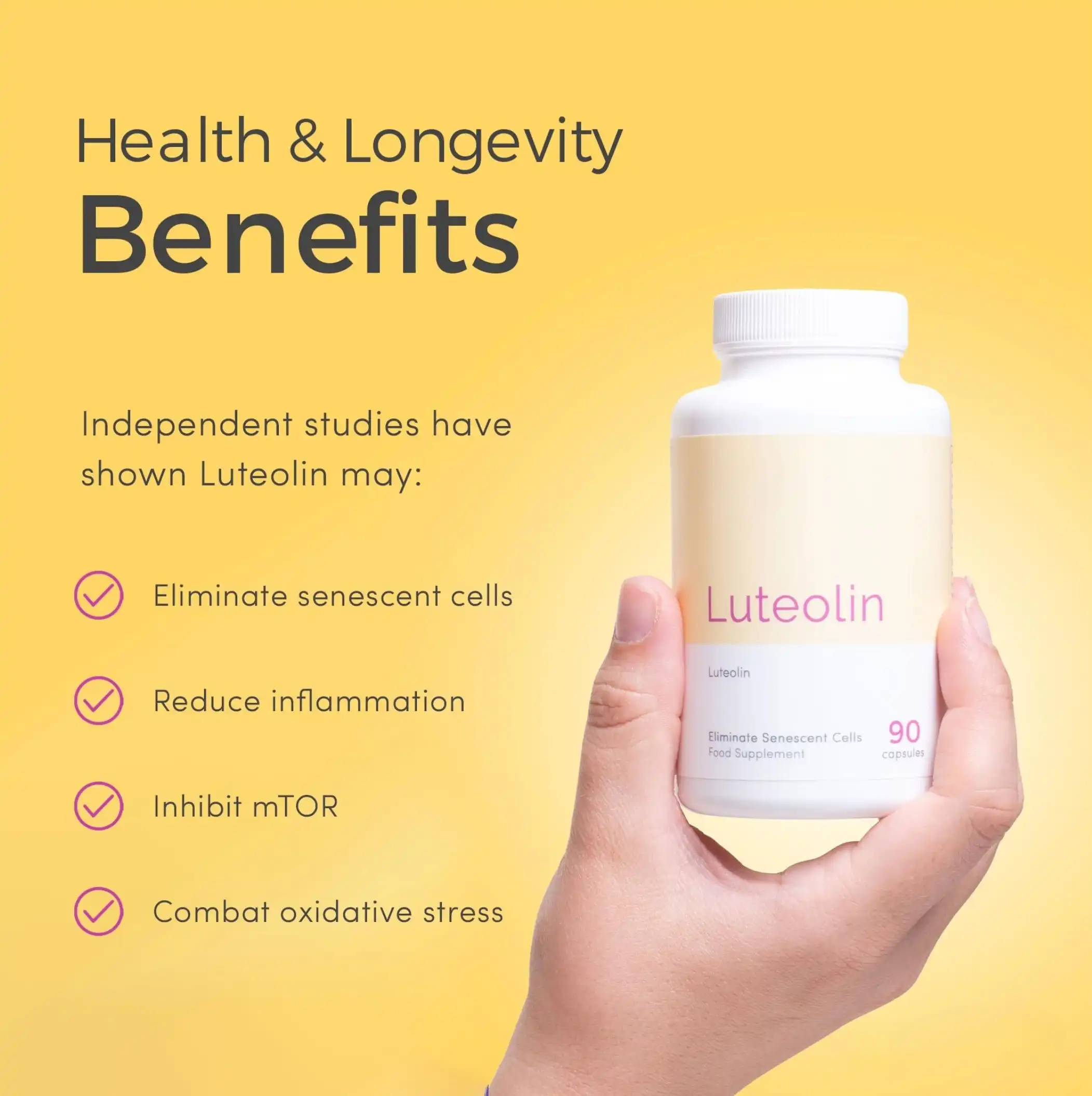
Supporting Healthy Aging Through Cellular Protection
Aging is a complex process characterized by the slow decline in physiological work and expanded defenselessness to age-related infections. Luteolin, with its different biological activities, has developed as a promising common compound for supporting solid aging and advancing longevity. By ensuring cells are protected from damage, balancing cellular signaling pathways, and improving cellular flexibility, luteolin can help moderate the impacts of aging and advance general well-being.
DNA Damage Protection
DNA damage, caused by different components such as oxidative stress and environmental poisons, is a major contributor to maturing and age-related infections. Luteolin has illustrated critical defensive impacts against DNA damage, protecting genomic astuteness and advancing cellular well-being. Studies have appeared that luteolin can diminish DNA strand breaks, repress the arrangement of DNA adducts, and upgrade DNA repair components. These protective impacts are intervened through luteolin's capacity to rummage free radicals, modulate DNA repair enzymes, and regulate cell cycle checkpoints.
Mitochondrial Function Enhancement
Mitochondria, the powerhouses of the cell, play a crucial role in cellular energy production and are also involved in various other cellular processes, including apoptosis and calcium signaling. Mitochondrial dysfunction is a hallmark of aging and has been implicated in age-related diseases. Luteolin has been shown to enhance mitochondrial function, promoting cellular energy production and protecting against mitochondrial damage. Studies have demonstrated that luteolin can increase mitochondrial biogenesis, the formation of new mitochondria, and enhance the activity of mitochondrial enzymes involved in energy production.
Telomere Length Maintenance
Telomeres, the protective caps at the ends of chromosomes, play a crucial role in maintaining genomic stability and cellular senescence. Telomere shortening is a hallmark of aging and has been associated with age-related diseases. Luteolin has been shown to have a positive impact on telomere length maintenance, potentially slowing down the aging process. Studies have demonstrated that luteolin can increase the activity of telomerase, the enzyme responsible for maintaining telomere length. Additionally, luteolin can protect telomeres from oxidative damage, which can accelerate telomere shortening.
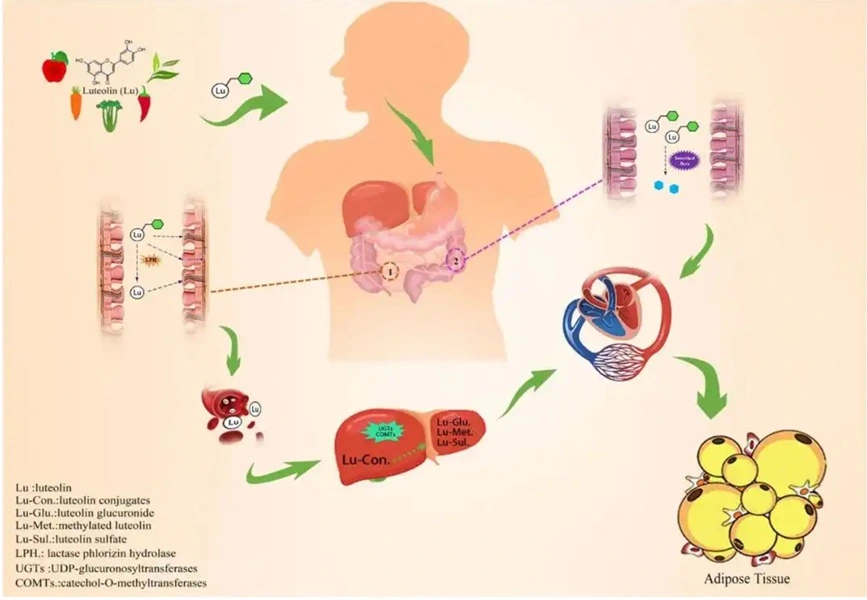
How to Incorporate Luteolin into Your Daily Diet?
Incorporating luteolin into your daily diet is a straightforward and effective way to harness its numerous health benefits. This versatile flavonoid is readily available in a variety of plant-based foods, making it easy to increase your intake through dietary modifications. From vibrant vegetables to aromatic herbs, there are numerous options to suit different tastes and preferences.
Dietary Sources
To augment your luteolin consumption, prioritize the inclusion of luteolin-rich foods in your daily meals. Celery, parsley, and broccoli are excellent choices, as they contain significant amounts of this beneficial compound. Green peppers, carrots, and thyme also contribute to luteolin intake. Incorporating these vegetables into salads, stir-fries, or soups can enhance both the flavor and nutritional value of your meals. Fruits such as apples, particularly their peels, and citrus fruits like oranges and lemons, also provide luteolin. Moreover, certain herbs and spices, including oregano, rosemary, and peppermint, can be used to season dishes, adding a boost of luteolin to your diet.
Supplementation Considerations
For individuals seeking a more concentrated dose of luteolin, supplementation may be a viable option. Luteolin supplements are available in various forms, including capsules and tablets. When considering supplementation, it is essential to choose high-quality products from reputable manufacturers to ensure purity and potency. Yangge Biotech, with its commitment to quality and innovation, offers a range of natural plant extracts, including luteolin, that meet the highest industry standards. It is advisable to consult with a healthcare professional before starting any new supplement regimen, particularly for individuals with underlying health conditions or those taking medications.
Recipe Ideas and Meal Planning
Integrating luteolin-rich foods into your daily meals can be both enjoyable and beneficial. Start your day with a luteolin-packed smoothie, blending celery, parsley, spinach, and apple for a refreshing and nutritious breakfast. For lunch, prepare a vibrant salad featuring mixed greens, bell peppers, carrots, and a sprinkle of chopped parsley. Dinner can include dishes such as stir-fried broccoli with garlic and ginger, or baked chicken seasoned with oregano and rosemary. Snacks like celery sticks with hummus or a handful of almonds can provide additional luteolin throughout the day.

Conclusion
Luteolin stands out as a remarkable natural compound with a wide array of health-promoting properties. Its potent antioxidant and anti-inflammatory effects, coupled with its ability to modulate cellular processes, make it a valuable asset in promoting mental clarity and supporting healthy aging. From enhancing cognitive function to protecting against oxidative stress and cellular damage, luteolin offers a holistic approach to well-being. By incorporating luteolin-rich foods into our diets or considering supplementation, we can harness the power of this exceptional flavonoid to optimize our health and enhance our quality of life.
Yangge Biotech Co., Ltd. is dedicated to providing innovative, high-quality natural plant extracts for the food and beverage, dietary supplement, and superfood industries. Our ISO, HACCP, Kosher, and Halal certifications, along with our dedicated R&D and production teams, ensure that we deliver products that meet the highest standards of quality and safety. With 24-hour online services, we are committed to meeting the evolving needs of our customers worldwide. Choose Yangge Biotech for your luteolin and other natural ingredient needs, and experience the difference that quality and expertise can make. Contact us today at info@yanggebiotech.com to learn more about our products and how we can support your business.
References
1. Lin, Y., Shi, R., Wang, X., & Shen, H. M. (2008). Luteolin, a flavonoid with potential for cancer prevention and therapy. Current cancer drug targets, 8(7), 634–646.
2. Jang, S., Kelley, K. W., & Johnson, R. W. (2008). Luteolin reduces IL-6 production in microglia by inhibiting JNK phosphorylation and activation of AP-1. Proceedings of the National Academy of Sciences, 105(21), 7534–7539.
3. Theoharides, T. C., Asadi, S., & Patel, A. B. (2013). Focal brain inflammation and autism. Journal of neuroinflammation, 10(1), 46.
4. Zhu, L. H., Bi, W., Qi, R. B., Wang, H. D., Wang, C., Zeng, Y. L., ... & Liu, E. H. (2011). Luteolin reduces primary hippocampal neuronal death induced by neuroinflammation in rats. Neurological research, 33(9), 927–934.
5. Nabavi, S. F., Braidy, N., Ghabrizadeh, A., Yeh, S. L., Mansouri, K., Bokaeian, M., & Nabavi, S. M. (2015). Luteolin as an anti-inflammatory and neuroprotective agent: A brief review. Brain research bulletin, 119, 1–11.
6. Dajas, F., Rivera, F., Blasina, F., Arredondo, F., Echeverry, C., Lafon, L., ... & Abin-Carriquiry, J. A. (2003). Cell culture studies on the antioxidant capacity of flavonoids. Redox report, 8(5), 265–272.

Based on your location and order quantity, you will have the opportunity to receive a limited time free shipping promotion!
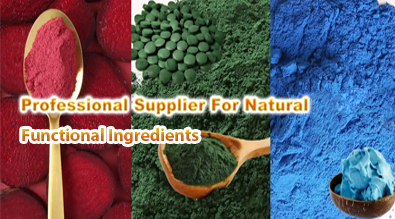
Who we are

